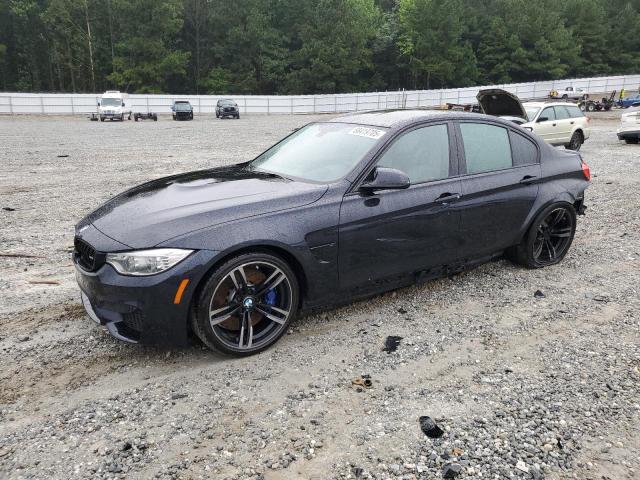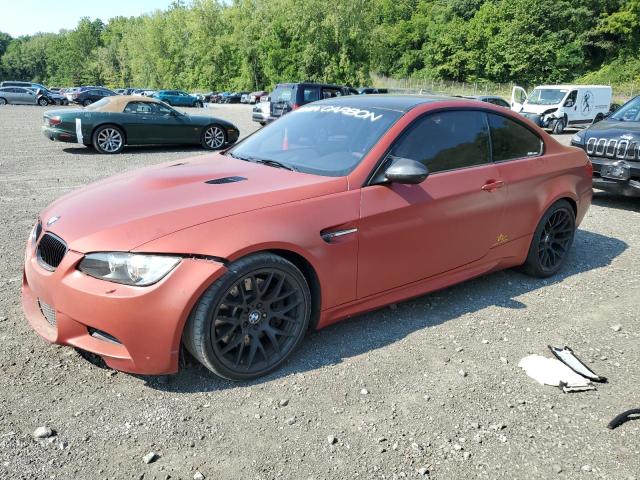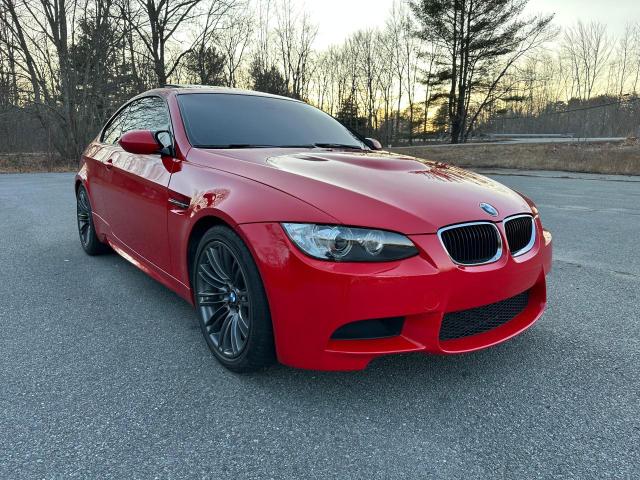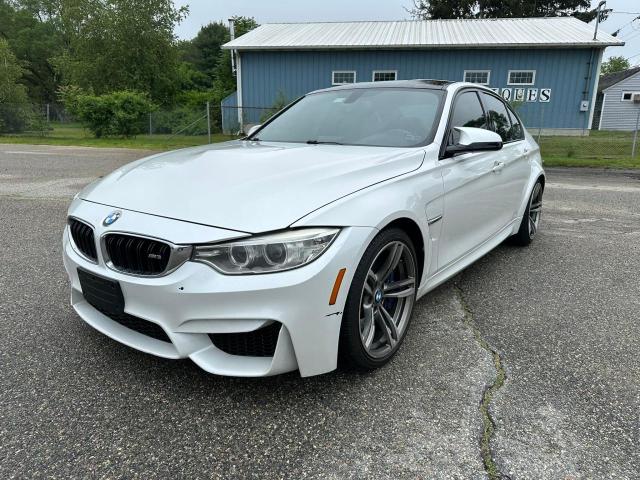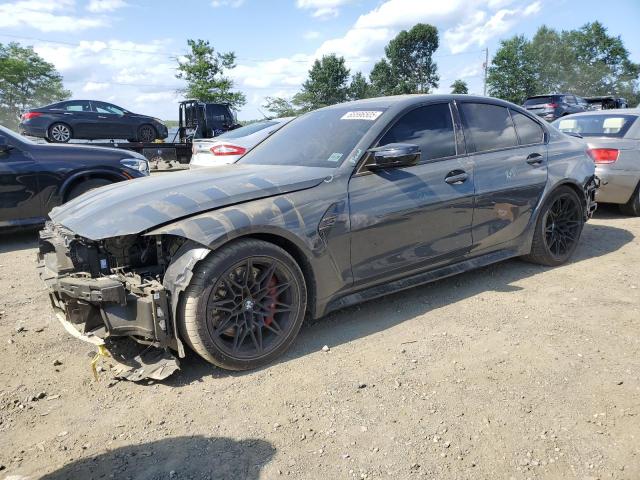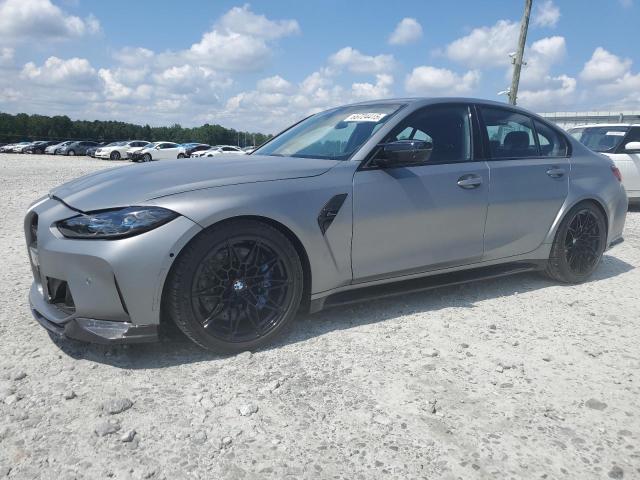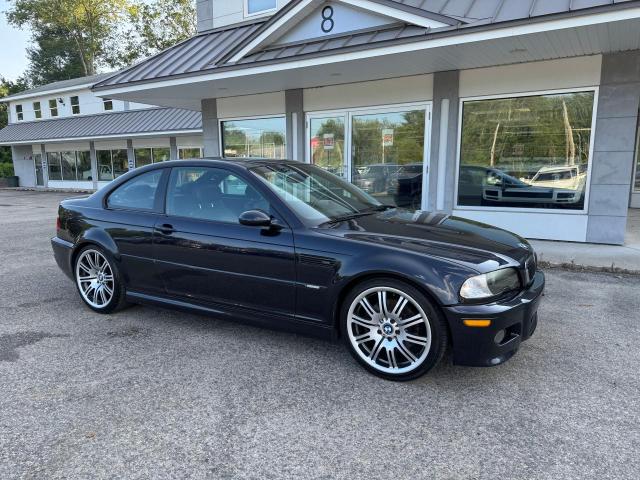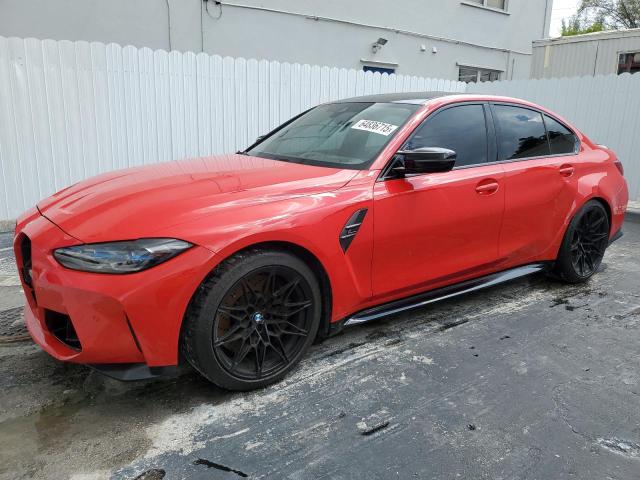2008 BMW M3 | WBSVA93578E041151
Lot details
- Sale Date2025-06-20
- Lot Number42378312
- ACV24978 $
- Sale documentBill Of Sale (Washington)
- LocationSeattle (WA)
- Odometer83,687 miles (134,681 km)
- Primary DamageFRONT END
- SellerGeico Insurance
Vehicle specifications
1
~€136,000
Engine: 4.0L Naturally Aspirated V8
Torque: 440 Nm
0–100 km/h: ~4.4 s
The E9x-generation BMW M3 holds a legendary status due to its singular use of a naturally aspirated V8 — the high-revving 4.0L S65 derived from BMW’s F1-inspired V10 engine. With an 8,300 rpm redline, razor-sharp throttle response, and visceral acoustic character, it delivered an experience unmatched by turbocharged successors. It was the only M3 to feature a V8, making it a unique chapter in BMW M history.
Beyond the engine, the E90/E92/E93 M3s featured hydraulic steering (offering pure feedback), a balanced chassis with optional EDC adaptive dampers, and near-perfect weight distribution. Even the convertible version, though heavier, retained a rear-wheel-drive purist layout and wide-track stability.
The M3 GTS, as the most extreme factory variant, included a stripped-down interior, roll cage, adjustable suspension, and increased displacement — effectively turning the road-going M3 into a track weapon homologated for street use.
Whether in sedan, coupé, or convertible form, the E9x M3 is a reference point for analogue precision and naturally aspirated excitement. Its driving character remains raw, engaging, and timeless — cementing its place in any serious sport-focused registry.
Final Bid BMW M3 (2008)
$12,300
$14,840
$18,100
Body Styles
The E9x M3 was offered in three distinct body styles: the E90 sedan, the iconic E92 coupe, and the E93 convertible with a fully retractable hardtop. While all three shared the same platform and powertrain, BMW M applied unique suspension setups to each for optimal balance.
A wide aluminum hood with power bulge, flared fenders, quad exhaust tips, carbon-fiber roof (coupe only), aggressive front fascia, and functional rear diffuser distinguished the M3 from the standard 3 Series. The carbon roof not only reduced weight but also lowered the center of gravity, enhancing the coupe's agility.
E93 was unique in that it lacked the carbon roof and carried ~200 kg more weight, but offered open-air V8 thrills with the press of a button.
Model Name Meaning (Manufacturer)
The name “M3” stands for Motorsport 3 Series, and has been used since the original E30 M3 of the 1980s. The “M” represents BMW’s Motorsport division, which builds high-performance versions of standard BMW models for the street and track.
This generation, the E9x M3, was particularly special because it introduced the first and only V8-powered M3 – breaking tradition with the high-revving inline-6s of previous generations. It was developed using lessons from Formula 1, including lightweight internals, dry-sump–style oiling, and an 8,400 rpm redline — traits that earned it cult status.
Model Name Meaning (Languages)
The alphanumeric “M3” nomenclature is globally understood and unchanged across markets, combining a single-letter performance designation ("M") with the model series ("3"). In all regions and languages, "M3" is a universally recognized symbol of performance, particularly among enthusiasts.The name conveys sportiness, racing lineage, and exclusivity, with no need for translation — its legacy transcends language barriers, much like GTI or RS.
Body & Interior Colors and Rims
BMW offered the M3 in a mix of classic M colors and more reserved tones. Hero finishes included Alpine White, Jerez Black, Silverstone Metallic, and Space Gray, but standout M-only hues like Interlagos Blue, Melbourne Red, Mineral White, and Frozen Gray (matte) made it truly special. Individual paint options like Atlantis Blue or Santorini Blue were available at extra cost.
The E92 coupe featured a carbon fiber roof, while the E93 convertible used a body-colored retractable hardtop. The E90 sedan stood out for its only-available rear doors and slightly different taillight profile.
Interior trims included Novillo leather in colors like Black, Fox Red, Palladium Silver, and Bamboo Beige. Trims ranged from Titan Shadow to carbon-structure weave, aluminum glacier, and piano black gloss. BMW Individual also allowed full-leather dashes, contrast stitching, and Alcantara headliners.
Standard wheels were 18" double-spoke alloys, with 19" Style 220M or 359M forged wheels as options. Special editions like the Frozen Edition and Competition Package (ZCP) introduced unique finishes, lower ride height, revised damping, and Y-spoke wheels in silver or gunmetal.
Top Expensive Options
- 7-Speed M DCT Transmission: ~$2,900
- M Drive + EDC (Electronic Damper Control): ~$1,200
- Competition Package (ZCP): ~$2,500
- BMW Individual Paint: ~$4,000+
- Novillo Full Leather Dash + Contrast Stitching: ~$2,100
- Extended Navigation with iDrive: ~$2,500
- Premium Audio (Logic 7 or Individual): ~$1,900
- Adaptive Xenon Headlights: ~$900
- Carbon Rear Spoiler / Front Splitters: ~$1,400
- Heated + Ventilated Seats (E93): ~$800
vs Competitors
The E9x M3 squared off directly with the Audi RS4 (B7), Mercedes-Benz C63 AMG (W204), and Lexus IS-F. Against the RS4, the M3 offered better steering feel, lighter weight, and sharper throttle response, though the RS4’s AWD provided better wet-weather confidence. The C63 AMG was a torque monster, with its 6.2L V8 producing more brute force (457–487 hp) but less finesse. The M3’s balance, rev range, and precise chassis gave it an edge in driver engagement and track consistency.
The M3 was also lighter, more agile, and more naturally aspirated than almost anything else in its class — making it the “purist’s choice”, especially with the 6-speed manual. Even against newer turbocharged rivals, it remains one of the last high-revving, analog, V8-powered sport sedans/coupes ever made.
Fun Fact
The M3’s S65 V8 was derived from the S85 V10 used in the E60 M5, both of which shared F1-inspired design elements. The engine was hand-built in Garching, had an 8400 rpm redline, an independent throttle body for each cylinder, and a dry-sump–style oiling system — making it one of the most exotic NA V8s ever put into a mass-produced sedan.


